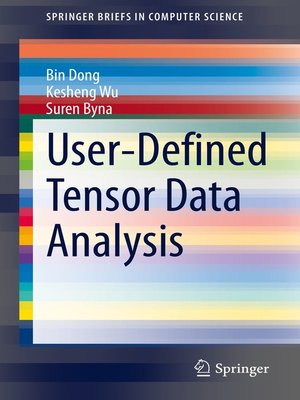
Sign up to save your library
With an OverDrive account, you can save your favorite libraries for at-a-glance information about availability. Find out more about OverDrive accounts.
Find this title in Libby, the library reading app by OverDrive.



Search for a digital library with this title
Title found at these libraries:
| Library Name | Distance |
|---|---|
| Loading... |
The SpringerBrief introduces FasTensor, a powerful parallel data programming model developed for big data applications. This book also provides a user's guide for installing and using FasTensor. FasTensor enables users to easily express many data analysis operations, which may come from neural networks, scientific computing, or queries from traditional database management systems (DBMS). FasTensor frees users from all underlying and tedious data management tasks, such as data partitioning, communication, and parallel execution.
This SpringerBrief gives a high-level overview of the state-of-the-art in parallel data programming model and a motivation for the design of FasTensor. It illustrates the FasTensor application programming interface (API) with an abundance of examples and two real use cases from cutting edge scientific applications. FasTensor can achieve multiple orders of magnitude speedup over Spark and other peer systems in executing big data analysis operations. FasTensor makes programming for data analysis operations at large scale on supercomputers as productively and efficiently as possible. A complete reference of FasTensor includes its theoretical foundations, C++ implementation, and usage in applications.
Scientists in domains such as physical and geosciences, who analyze large amounts of data will want to purchase this SpringerBrief. Data engineers who design and develop data analysis software and data scientists, and who use Spark or TensorFlow to perform data analyses, such as training a deep neural network will also find this SpringerBrief useful as a reference tool.
This SpringerBrief gives a high-level overview of the state-of-the-art in parallel data programming model and a motivation for the design of FasTensor. It illustrates the FasTensor application programming interface (API) with an abundance of examples and two real use cases from cutting edge scientific applications. FasTensor can achieve multiple orders of magnitude speedup over Spark and other peer systems in executing big data analysis operations. FasTensor makes programming for data analysis operations at large scale on supercomputers as productively and efficiently as possible. A complete reference of FasTensor includes its theoretical foundations, C++ implementation, and usage in applications.
Scientists in domains such as physical and geosciences, who analyze large amounts of data will want to purchase this SpringerBrief. Data engineers who design and develop data analysis software and data scientists, and who use Spark or TensorFlow to perform data analyses, such as training a deep neural network will also find this SpringerBrief useful as a reference tool.







